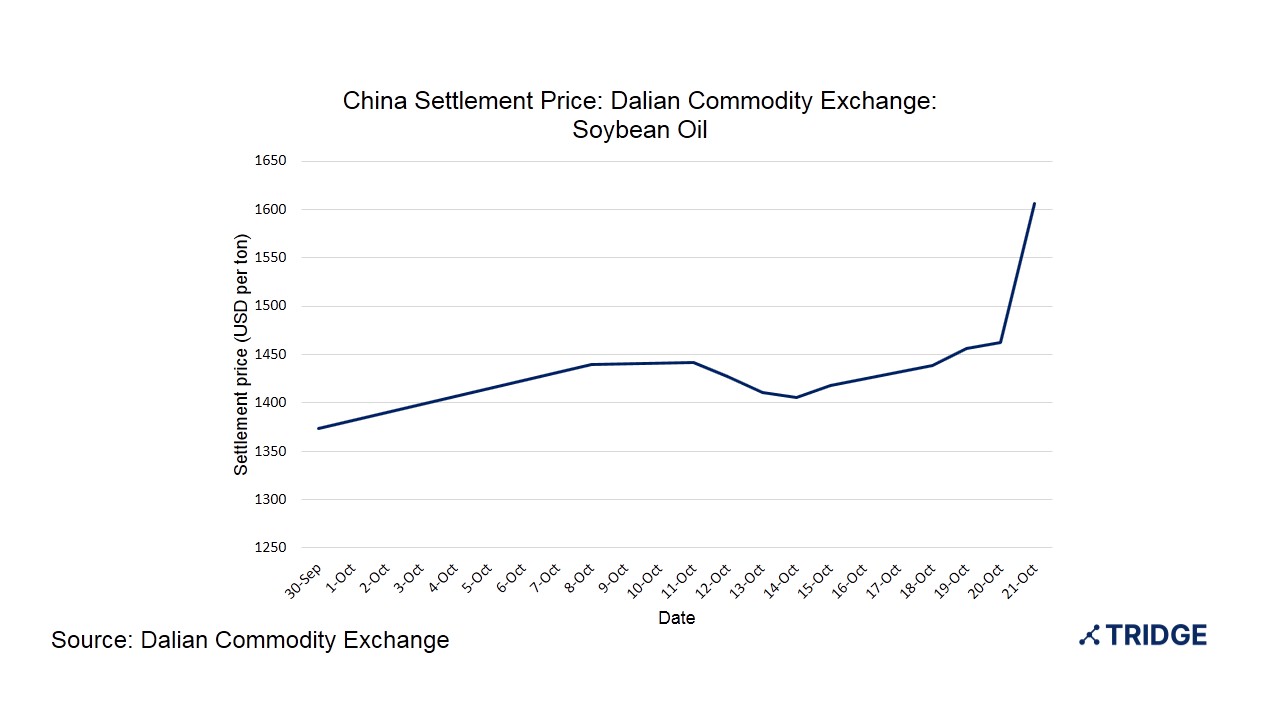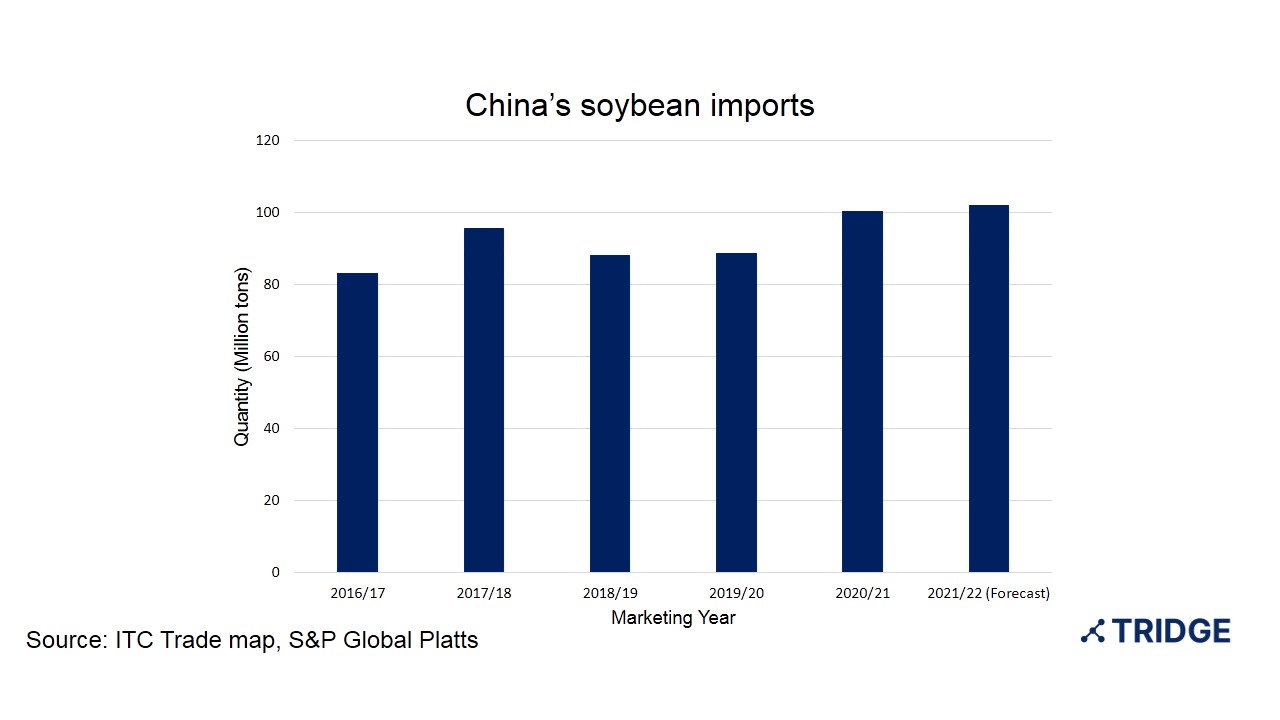Chinese Soybean Oil Prices Rise to 10-year High

Soybean crushing margins recover
Crushers purchase soybeans from producers to crush into soybean meal for livestock feed and soybean oil for cooking, with the portion of the two products at about 80:20. Soybean crushing margins in China are recovering due to increasing soybean oil prices. Soybean crush margins at Shandong, China’s leading soybean processing hub, have risen to their highest since March 2021, recovering from record lows in June caused by weakening soybean meal demand from loss-making hog farmers. A decrease in pig production in 2021 due to significant losses to the pig herd due to an outbreak in African Swine Fever has limited demand for soybean meal and resulted in a dip in Chinese soybean demand in recent months. Crushers in Shandong province are now making a profit of about USD 23.49 per tonne, compared to record losses of USD 101.79 per tonne in June.
Market Outlook
Domestic and international demand have raised China’s soybean oil prices. The Chinese market is anticipating a peak demand season for oils during winter. Soybean crushers shut down plants following government regulations to control power usage amid a nationwide power crisis, pushing soybean oil prices up. Eleven crushing plants in Northern China, seven in Eastern China, and nine in Southern China have been affected by the power cuts. Typically, power usage in the country surges in the last quarter of the year. Therefore, frequent power rationing could significantly impact crushing operations in the coming months.

Soybean oil supplies remain low at crushing plants, and a soybean oil shortage is forecast throughout the second half of the year. According to Mysteel, online pricing and intelligence service, weekly soybean oil inventories by October 15 reached 933,800 tonnes, decreasing by 0.5% from September and dropping by 14.5% from the previous year.
Chinese soybean imports could remain low in October and November, leaving China’s soybean oil supplies limited. Stocks of soybean meal, a by-product of the soybean oil production process, are expected to rise during this period, as crushers look to boost production and capitalize on soybean oil demand and high soybean oil prices. According to S&P Global Platts Analytics, China is forecast to import a record-high 102 million metric tons of soybeans in MY 2021/22 (September-August), as the country continues its recovery from African swine fever. However, if the local crushers continue to suffer from power shortages, the country’s oilseed demand forecast could be revised down.

Sources:
- Reuters. “China's soyoil hit near 10-year high, crush margins swing back to profit.”
- Ceic Data. “China Settlement Price: Dalian Commodity Exchange: Soybean Oil: 5th Month.”
- Dalian Commodity Exchange. “Soybean Oil Futures.”
- S&P Global Platts. “China's soybean demand in Q4 set to slacken as crushers face power cuts: trade.”


